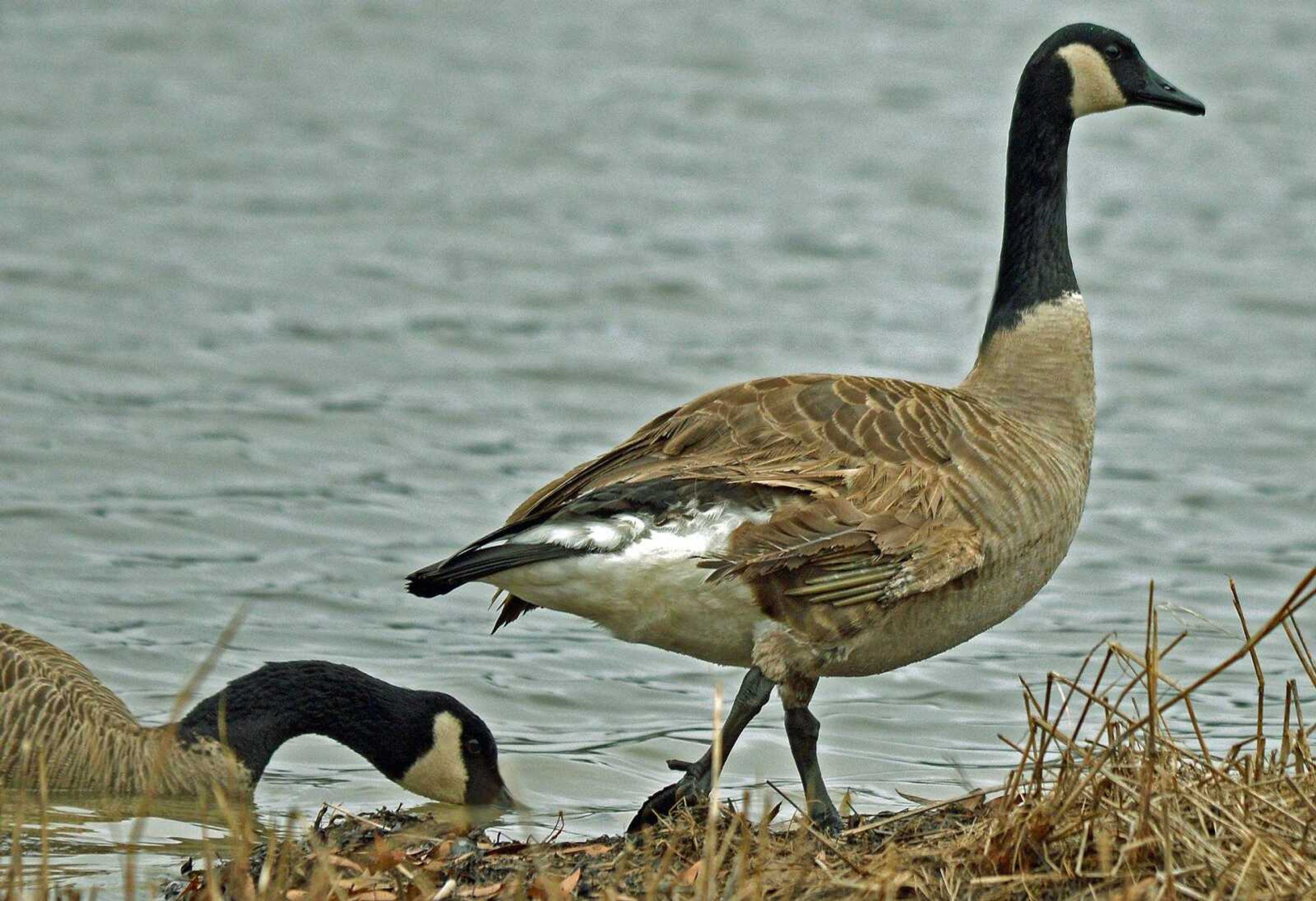A goose in danger
On New Year's Day, I found these two Canada geese foraging along the shore of a 30-acre lake. A flock of about 250 other Canada geese were swimming farther out in the lake. I photographed the pair as they stayed close to the shore and close together...
By Aaron Horrell
On New Year's Day, I found these two Canada geese foraging along the shore of a 30-acre lake. A flock of about 250 other Canada geese were swimming farther out in the lake. I photographed the pair as they stayed close to the shore and close together.
Only after taking several photos and watching them feed for several minutes did I realize one goose had severe damage to its right wing. New wing feathers appeared to be growing in, but that will take time. The goose walked and swam normally, but it could not fly. I believe this goose and hopefully its mate probably will stay at this lake for the winter because of the safety the water provides.
On land, the wing-damaged goose can not outrun a coyote, fox, bobcat or dog. In the lake, it is safe as long as other geese or ducks accompany it. Alone in the water, an eagle could notice its vulnerability, capture and eat it. Yet, the greatest threat to this flightless goose will be an extended period of freezing weather that freezes over the surface of the lake. The frozen surface would allow the coyote, fox, bobcat or dog easy access to the goose.
I do not know how the goose sustained the injury to its wing. Close inspection by zooming in on the photo with my computer does not indicate shotgun pellet holes in the feathers that could have come during recent goose hunting season.
Nature can be harsh in some cases and gracious in others. I am impressed with the friendly second goose that is forgoing the company and safety of the large flock and providing dedicated friendship to the flightless goose. Can humans learn survival lessons by observing nature?
Connect with the Southeast Missourian Newsroom:
For corrections to this story or other insights for the editor, click here. To submit a letter to the editor, click here. To learn about the Southeast Missourian’s AI Policy, click here.










